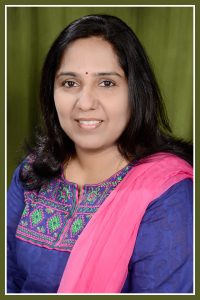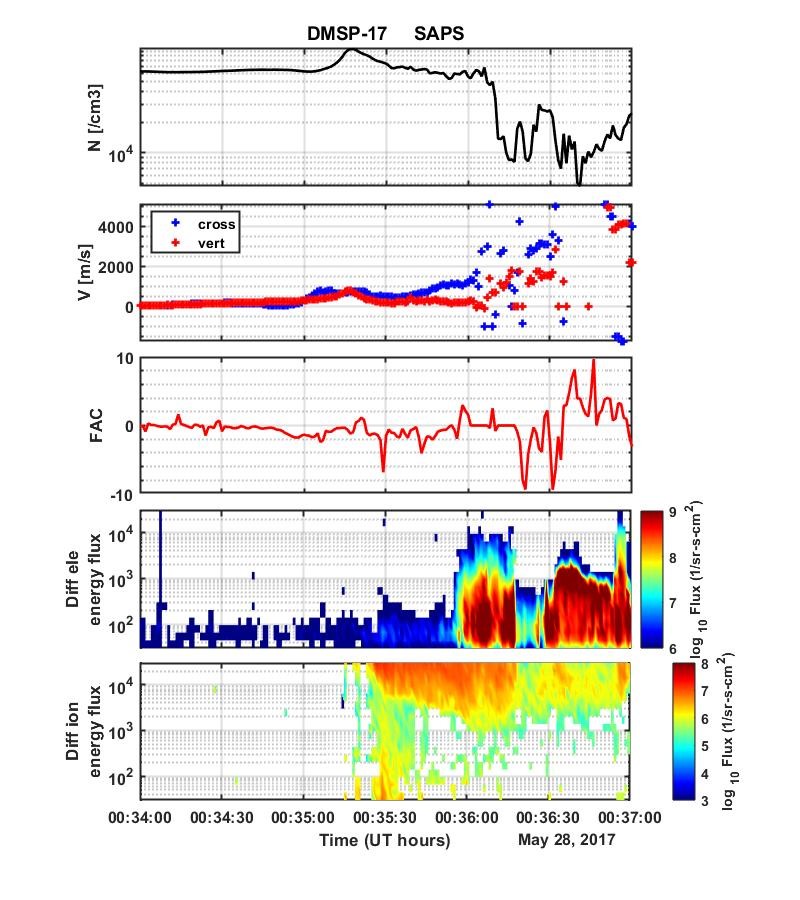Prof. B. Veenadhari, Indian Institute of Geomagnetism, New Panvel, Navi Mumbai, India
Research activities at RISH: Investigation of the Subauroral Polarization Streams (SAPS) during Magnetic storms events and associated ground and satellite observations
Prof. B. Veenadhari,, Indian Institute of Geomagnetism, New Panvel, Navi Mumbai, India
 The main focus of my research at RISH is to Investigate the Subauroral Polarization Streams (SAPS) during Magnetic storms events with satellite observations and signatures of on the ground magnetograms sub auroral region and the related effects on equatorial electric fields. The observations of intense westward plasma flow during magnetic storms in dusk-to midnight subauroral ionophere is called Subauroral Polarization Streams (SAPS), which is important effects on Space weather due strong plasma flow across the narrow sub auroral latitudinal belt with less than 50. Generally, the SAPs occurs during the dusk sector and it will extend the post-midnight to dawn during very intense geomagnetic storms. SAPs are driven by the strong poleward electric field equatorward of the electron auroral boundary where the ionospheric conductivity is relatively low and exists of downward field aligned currents especially Region 2(R2FACs) which enhances with strong gradient of ring current pressure at main phase of geomagnetic storms. Recent studies reported the observations of dusk and dawn side SAPS with satellite observations and simulations. It is found out that these westward plasma flows associated with SAPS, dusk to evening sector also penetrate to continuously to equatorial latitudes resulting westward plasma drifts and resulted in counter electrojet signatures. So, during my stay at RISH, I have analysed good number of magnetic storms and focusses observation of SAPS with Defense Meteorological Satellite Program (DMSP) and associated Field aligned Currents in conjunction north-south component (H-Component) earth’s magnetic field component variations from Subauroral, mid and low latitudes data. The FACs contribution and time scales of dusk side SAPS will be studied for severe geomagnetic storms intervals and plausible mechanisms will be discussed in detail with ground and satellite observations and simulations. The dusk sector subauroal latitude and equatorial latitude magnetograms are analysed to investigate SAPS signatures with clear R2 FACs currents. Some analysis results are obtained and some are under progress.
The main focus of my research at RISH is to Investigate the Subauroral Polarization Streams (SAPS) during Magnetic storms events with satellite observations and signatures of on the ground magnetograms sub auroral region and the related effects on equatorial electric fields. The observations of intense westward plasma flow during magnetic storms in dusk-to midnight subauroral ionophere is called Subauroral Polarization Streams (SAPS), which is important effects on Space weather due strong plasma flow across the narrow sub auroral latitudinal belt with less than 50. Generally, the SAPs occurs during the dusk sector and it will extend the post-midnight to dawn during very intense geomagnetic storms. SAPs are driven by the strong poleward electric field equatorward of the electron auroral boundary where the ionospheric conductivity is relatively low and exists of downward field aligned currents especially Region 2(R2FACs) which enhances with strong gradient of ring current pressure at main phase of geomagnetic storms. Recent studies reported the observations of dusk and dawn side SAPS with satellite observations and simulations. It is found out that these westward plasma flows associated with SAPS, dusk to evening sector also penetrate to continuously to equatorial latitudes resulting westward plasma drifts and resulted in counter electrojet signatures. So, during my stay at RISH, I have analysed good number of magnetic storms and focusses observation of SAPS with Defense Meteorological Satellite Program (DMSP) and associated Field aligned Currents in conjunction north-south component (H-Component) earth’s magnetic field component variations from Subauroral, mid and low latitudes data. The FACs contribution and time scales of dusk side SAPS will be studied for severe geomagnetic storms intervals and plausible mechanisms will be discussed in detail with ground and satellite observations and simulations. The dusk sector subauroal latitude and equatorial latitude magnetograms are analysed to investigate SAPS signatures with clear R2 FACs currents. Some analysis results are obtained and some are under progress.
Finally, I would like to extend my sincerest thanks to my host Prof. Yasuke Ebihara for his support, time, keen interest in our research, and very warm hospitality during my stay at RISH. I am also thankful to Prof. Yoshiharu Omura for his valuable suggestions during our discussion of on our research topics. My sincere thanks to Ms. Hiroko Nitto san for continuously helping me in all administration and guest house matters. I sincerely wish and expect that our collaboration will continue and expand in the future.



